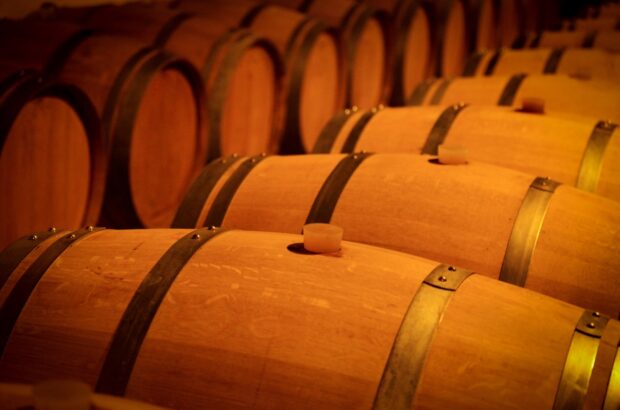Saignée can be translated as ‘bleeding’ in French, and in winemaking the saignée method typically involves ‘bleeding’ off liquid from a tank of juice for red wine in the early stages of the winemaking process.
This can help to produce more concentrated flavour and colour in red wine, as the Australian Wine Research Institute explains.
But, the siphoned-off juice can also be used to make rosé wines.
Some people have criticised saignée rosé as a mere side-show or after-thought to red wine production.
Others argue that plenty of highly regarded producers and regions have harnessed the principles of the saignée method to create rosé wines that burst with character and depth. It’s used to make top rosés in Spain’s Navarra region, for instance, where the technique is known as ‘sangrado’.
As The Wine Society’s Marcel Orford-Williams and Jo Locke MW noted in this article, saignée rosés ‘are certainly not any lesser quality than direct-press wines’.
Champagne
At cult producer Champagne Péters, a ‘rosé de saignée’ is blended with top Chardonnay from Le Mesnil-Sur-Oger to create the ‘Rosé for Albane’ cuvée, first launched in 2007.
The grower-house also recently used the technique to launch a rosé Champagne in collaboration with the co-owners of Château Miraval, including Brad Pitt, Angelina Jolie and the Perrin family of Château de Beaucastel.
Rodolphe Péters, winemaker and head of the family business, explained to Decanter.com why a saignée rosé had been used, instead of the more common method in Champagne of blending a small amount of red wine into white wine cuvées.
‘The artistic concept behind the creation of Fleur de Miraval is the blending of Chardonnays that have noble, autolytic evolutionary notes and supremely fresh Pinot Noirs with slightly acidulous, red fruit notes.
‘Given the aromatic profile we were looking for in the Pinot Noirs, the saignée method seemed an altogether more natural choice than using classic red winemaking techniques that would have produced much riper, richer tones.’
Péters added, ‘All of the batches of Chardonnay making up the Côte des Blancs blend express the chalky characteristics that are specific to this region, and a powerful maritime minerality.
‘We often say that these wines from Le Mesnil-sur-Oger have a salty, even briny finish. During our own search for the perfect rosé blend we noted that these saline, slightly bitter, finishes did not sit well with the structure and the tannins of red wine, whereas rosé, with its more diaphanous structure and much lighter tannic content, produced a far more harmonious result.’
Miraval’s winemaking team already uses the ‘saignée’ method for the small portion of Syrah grapes that help to make up its Provence rosé.
Elsewhere in Champagne, Louis Roederer says its Cristal Rosé is partly made using the saignée technique, which involves bleeding off juice after several days of cold maceration in contact with grape skins.
Champagne Delamotte and Laurent-Perrier are also known to employ similar strategies.
Can you taste it?
There are many winemaking decisions that will affect the character of the wine in your glass, but some believe the saignée method can enhance certain qualities – as explained by Péters above.
Champagne expert Michael Edwards told Decanter.com, ‘In my opinion, the saignée method of bleeding the red Pinot Noir grapes for making rosé certainly does give a different flavour in the glass. In essence, a much closer taste of place, of the territory from which it comes.’
Edwards, author of The Finest Wines of Champagne, said there is often a ‘vinous’ quality to the wines, and in Champagne the method tends to be favoured ‘by grower domaines with great terroirs’.
However, consistency between vintages can be an issue.
‘One drawback of saignée is the variable hue, harvest by harvest,’ said Edwards. An extra touch of Chardonnay can sometimes be used to fix the colour, he added.
Saignée is not for everyone, however. Champagne houses who prefer to make rosé by blending a small amount of red wine together with white ‘would say they want to preserve the essential elegance of Champagne in pink’, said Edwards.







